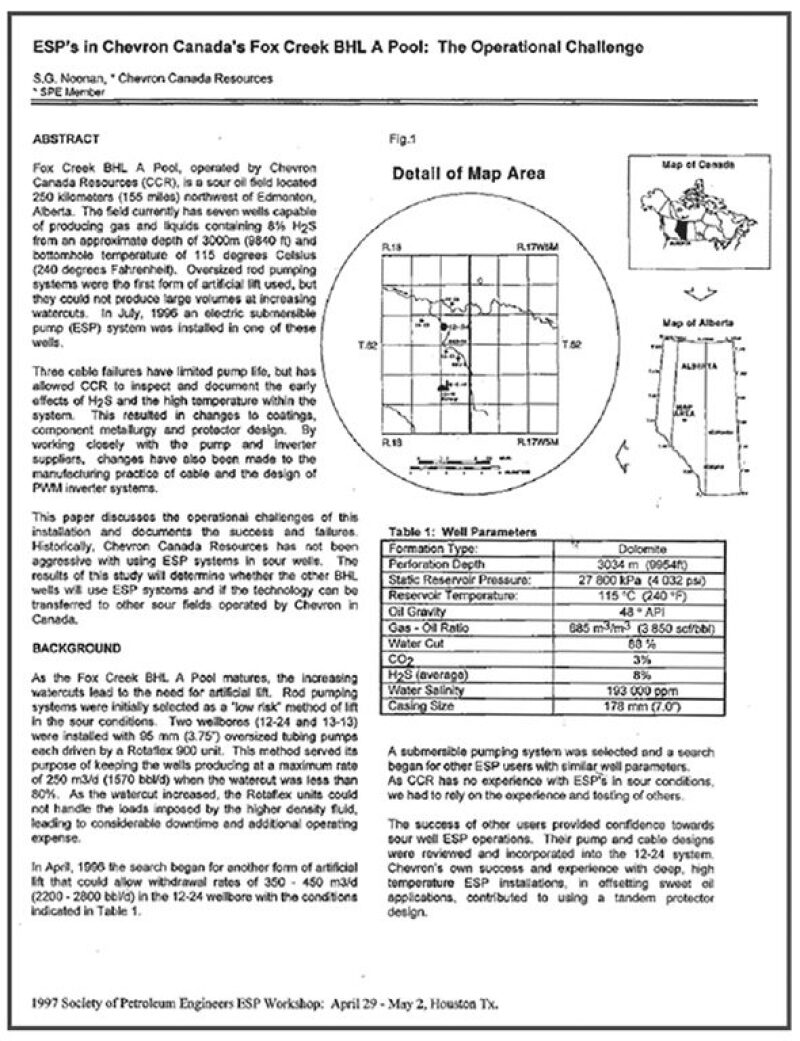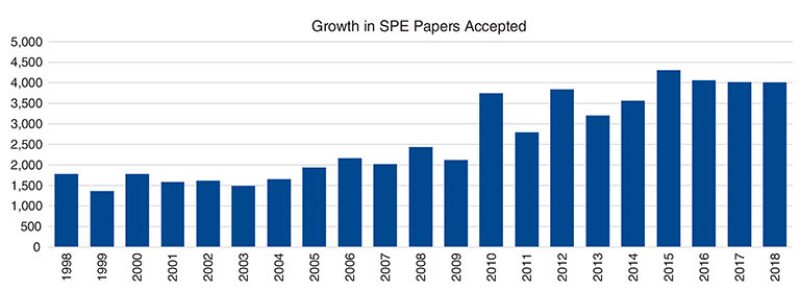
Our Society has a wealth of technical content, and it is rapidly growing. The value of that technical content derives from the quality of it. Having high-quality content will continue to strengthen SPE’s professional reputation, which is critical when entering new and emerging markets, attracting new members, and, most importantly, maintaining and engaging our current members and corporate sponsors. Our technical content that is consumed daily by our members is also the source of knowledge for the incoming generation, and we need to ensure that it is of the highest quality for our future innovators and leaders to excel.
To strengthen the quality of SPE’s technical content, I have outlined the following objectives:
- Increase the awareness and use of all the tools and methods provided to authors to create high-quality papers
- Educate program committees about their roles and responsibilities toward working with authors to ensure technical quality
- Establish methods by which to track technical quality within SPE’s published and presented content
- Support and develop a better process for formal peer review.

When I started as a professional member, there was a strong sense of pride around getting an abstract selected and having the final paper worthy of the SPE logo appearing on it. Companies took pride in having their employees become authors and got very involved in the writing of the manuscript, as their name would also appear on it. Some of the more involved companies garnered an industry reputation of publishing very high-quality papers, and those presentation rooms would be standing room only as a result. As SPE has expanded the number of conferences globally, more members have the opportunity to have their work included as an SPE paper.
I remember submitting my first abstract and getting it accepted. This was in 1997, and it was for a section event that had papered proceedings: The Gulf Coast Section Electric Submersible Pump Workshop. When I informed my management at Chevron that I had an accepted abstract, they rallied mentors to guide me as I wrote the technical paper. They wanted to ensure that the final manuscript was a good one because not only was my name on it, so was theirs. There was a lot of work put into that paper and many rehearsals for the presentation itself. It was a huge learning experience for me not only writing the paper but also enduring the critiques of my peers/mentors, but the result was a paper that I was proud to have my name on and the confidence to present it.
Since my first paper in 1997, SPE membership and events that offer a call for papers have grown substantially. As global membership has increased dramatically, the number of papers from SPE conferences has more than doubled.
There are two important groups of people that are key to a good quality paper being published in SPE: the authors and the technical program committee. Fortunately, SPE has developed helpful tutorials for both groups. Authors want to write high-quality papers and have that SPE logo, a symbol of technical excellence, appear on the upper left-hand corner. However, many members today may not have the resources within their own companies that I did to provide mentorship around writing abstracts and manuscripts. What SPE has put into place are tools and processes to guide authors on writing quality papers. SPE is also guiding program committee members on mentoring their authors during the process. These informal processes, along with support from knowledgeable colleagues and company resources and review, where available, should serve well to increase the quality of conference papers. While some have suggested more rigorous review prior to conference acceptance, it would greatly slow the speed by which we disseminate our technical information, and it puts us at risk of not capturing knowledge from members who do not want a formal peer review.
The first step to an accepted paper is a great abstract, which is all the program committee will have to review about your proposed paper during the selection process. I get many questions from members on how to write a good quality abstract. SPE has created an Author Resources website (www.spe.org/en/authors/resources/) that provides useful information on how to prepare abstracts, manuscripts, and presentations. SPE has prerecorded webinars on writing and presentations available. I, along with other members, have given tutorials to authors during the larger conferences such as ATCE. I highly encourage potential authors to attend these presentations as the group discussions can be very informative.
Once the abstract is submitted, it is then evaluated by the technical program committee. The technical program committee members have the difficult task of building a high-quality technical program based on the information presented in the abstracts. While being a technical committee member is a gratifying experience, it plays a significant role for the overall technical quality of a conference. SPE put together a document and tutorial on how to best conduct abstract review, rating, and selection to build a quality event. I have served on many program committees myself, and putting together this guidance was a passion of mine during my first term on the SPE Board of Directors (https://webevents.spe.org/products/abstract-review-rating-and-selection-tutorial-2).
Getting an abstract selected is an invitation to submit a manuscript for presentation and publication into OnePetro. The author still has an obligation to write a quality paper that delivers on the thesis that was promised in the abstract. Writing a good paper takes time, especially after rewrites from internal peer feedback, so it is best to start the process soon after being notified about abstract acceptance. A few years ago, SPE began checking papers for plagiarism during manuscript submission, so take advantage of the opportunity to check the paper yourself prior to submission. It is also important for the technical committee to reach out to authors to review their drafts and provide guidance. SPE has recently put together a guiding document for committee members on how to best mentor authors during this process. Through the authors and technical committee members working together, we not only increase the quality of the paper entering into OnePetro, but we also elevate the technical quality and reputation of our events.
The goal of strengthening technical quality is ambitious, and finding metrics by which to track progress can be complicated. The SPE Technical Directors and staff have been working on a method for years; however, judging the quality of a presentation or paper can be very subjective. SPE does calculate a Technical Quality Index for its events based on responses to technical quality questions posed in the after-event surveys. While this TQ index is not a direct measure of quality, it does provide a useful data point over time to indicate whether the perceived technical quality of a specific event is increasing or decreasing. The SPE Meetings and Training Board Committee uses this index to monitor the “health” of our papered conferences and symposiums, and will review this and other means of collecting this type of feedback from our members.

Finally, there is SPE’s formal peer review process for journal publication. Having a manuscript number followed by a –PA (Peer Approved) is both an accomplishment and an honor. The peer-review process requires a considerable time commitment from the author, technical peer reviewers, associate, and executive editors. SPE’s journals have grown in stature and, as a result, more manuscripts are being submitted for review. I want to champion use of digital technology to streamline the process, making it less volunteer intensive and decreasing the amount of time to complete peer review.
In summary, there are many ways we will work on strengthening the quality of our technical content. This is something that I am very passionate about and will champion as your SPE President. I am proud of the wealth of technical knowledge our Society has gathered over decades and grateful to all our members who contribute to our technical repositories. Our SPE logo is a symbol of technical excellence, and we all need to ensure our Society’s content and programs are worthy of that stamp of quality.
Why did you become an SPE member? Please send your response to president@spe.org. To hear Shauna’s President’s Column via podcast, please go to www.spe.org/en/podcasts.


